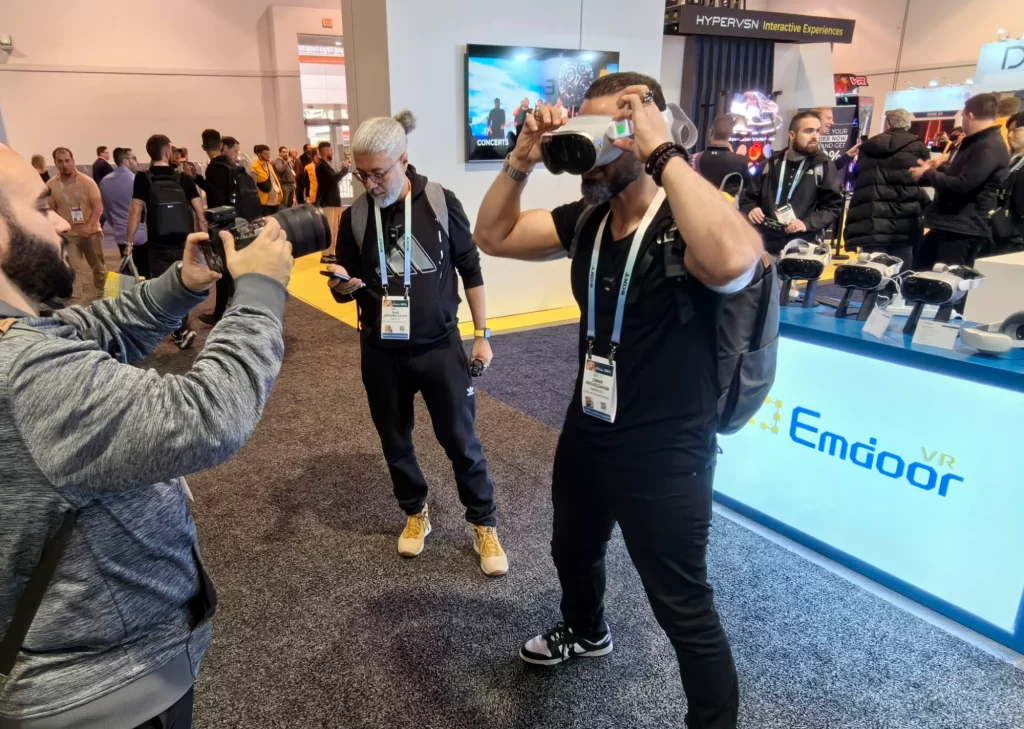Let’s be honest, Apple’s Vision Pro headset is one of the hottest topics in tech right now. While enthusiasts in many parts of the world wait eagerly for the delivery of the headset, another mixed-reality headset is slowly surfacing. A Shenzhen-based company, EmdoorVR, is offering a more wallet-friendly alternative. Named Vision SE, this device draws heavily on the design cues of Apple‘s much-discussed headset but at a fraction of the cost.
EmdoorVR’s headset lacks eye tracking and hand-gesture controls
EmdoorVR’s CEO, Shi Qing, sees this as a smart move to catch the wave of interest Apple has created, despite the slight slowdown in the VR and AR sectors. The Vision SE, while resembling Apple’s offering in looks, cuts down significantly in capabilities and price. For around $280, users get to experience VR and AR through a decently specced 5.5-inch display, though without the sophisticated features like eye tracking and hand-gesture controls that the $3,499 Apple Vision Pro boasts.

Shi acknowledges the similarities between the two devices, which has even earned the Vision SE a playful nickname online, linking it to Shenzhen’s reputation for tech imitations. However, he assures that all legal bases are covered with patents and audits to avoid any issues.
The backdrop to this launch is a challenging year for the AR and VR industry, with a reported decline in shipments and economic pressures affecting both consumers and businesses. Yet, with giants like Apple and Meta introducing new devices, there’s renewed optimism for growth in the sector.
EmdoorVR, which began by making VR devices for other companies, sees the Vision SE as its entry into the consumer market. This strategy seems timed to ride on Apple’s launch, with the Vision SE launching just as the tech world is on and on about the Vision Pro.
Apple’s move into VR and AR is drawing more developers and possibly altering how we interact with digital content. For EmdoorVR, the immediate goal is survival in a competitive atmosphere, and more so, adapting to these changes. Let us wait and see how that turns out for the China-based company.
RELATED:
- TCL’s New 120Hz OLED AR Glasses Offer a Vision Pro Experience Without the Cost
- TikTok’s Native App for the Apple Vision Pro is Here, and it Looks Clean!
- Get $100 Off on Vivo X100 Pro at Giztop
- How to add custom GIFs and stickers to WhatsApp
(Via)






